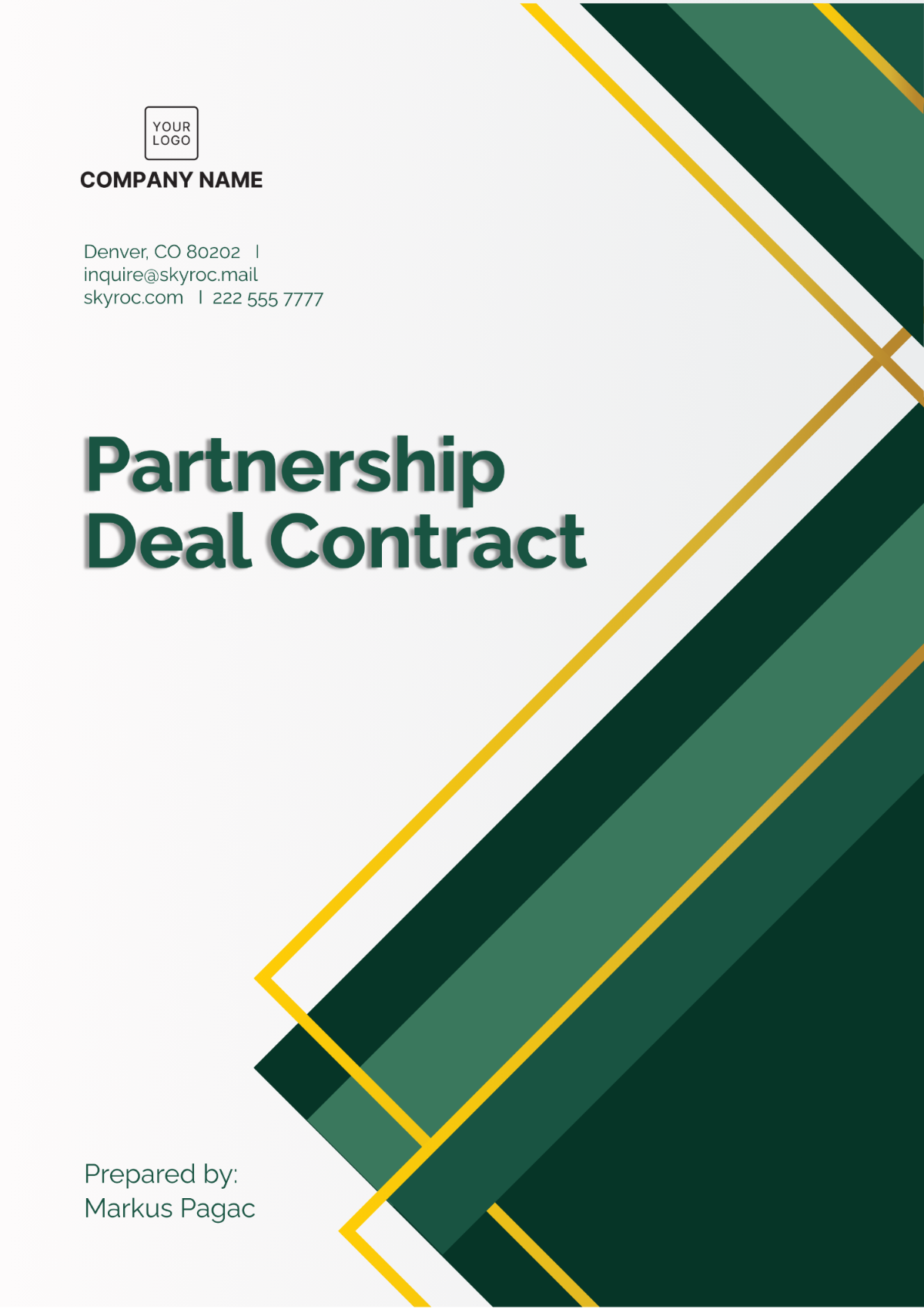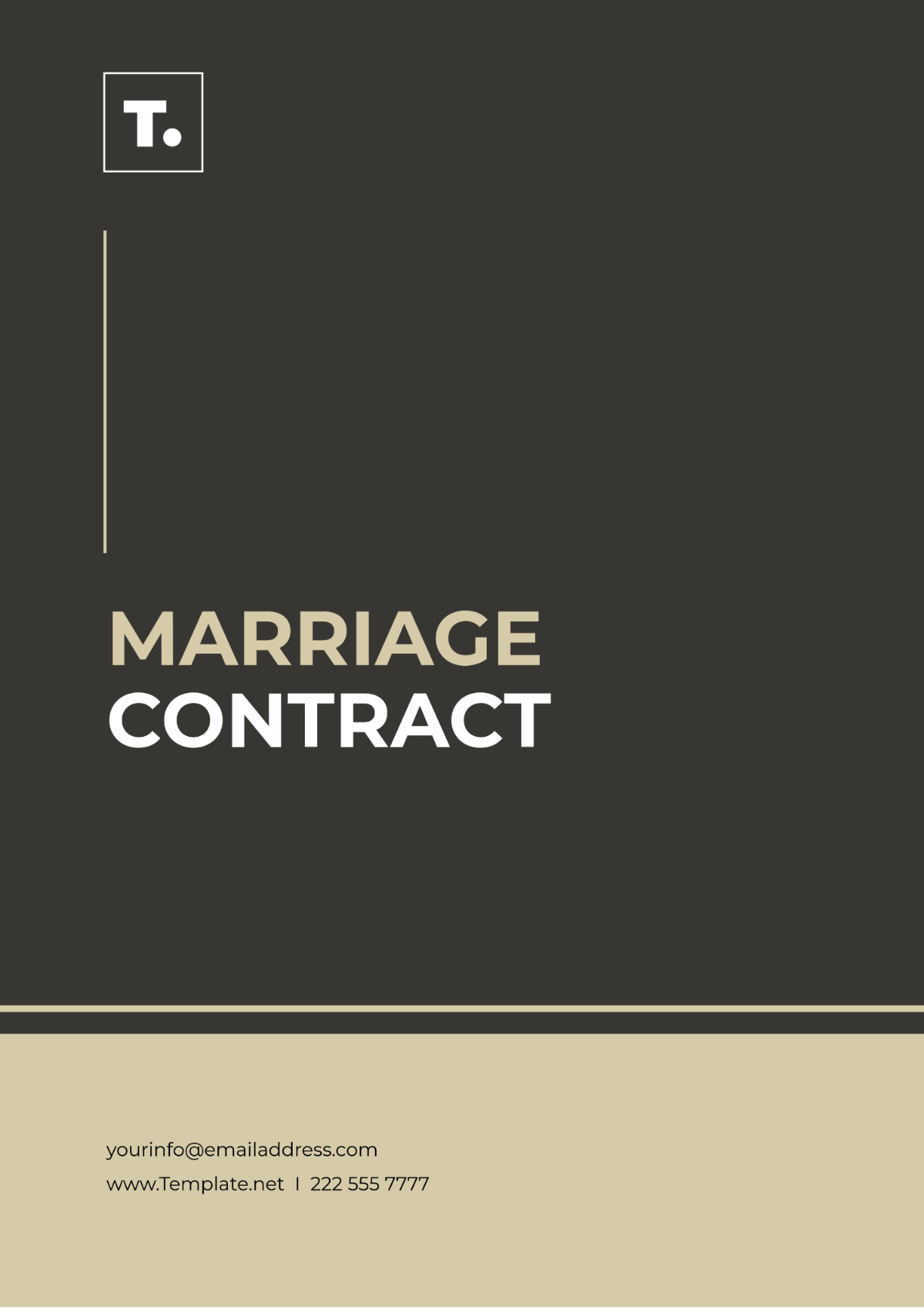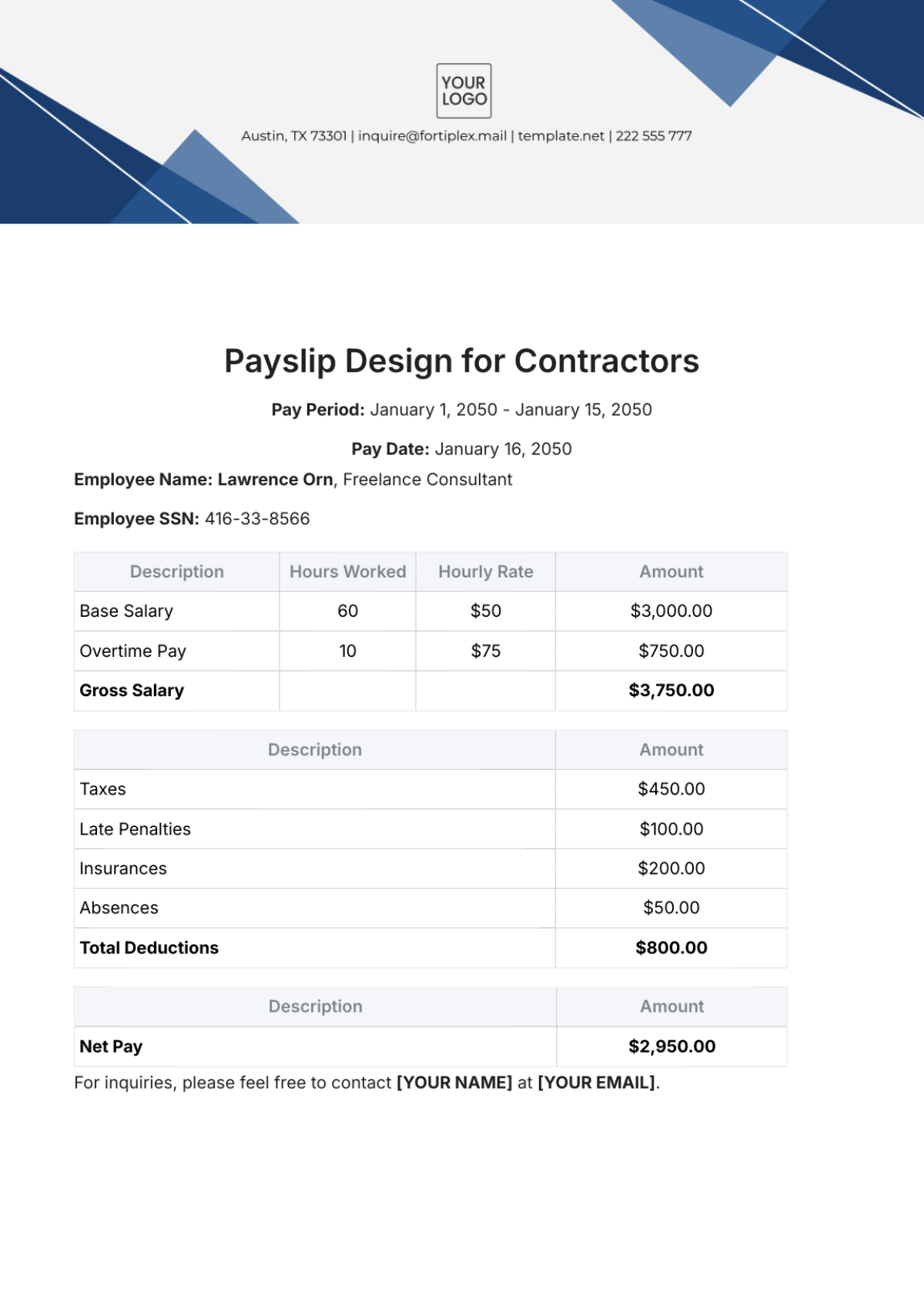Free Sales Protocol for Contractual Disputes Template
Sales Protocol for Contractual Disputes
I. Executive Summary
This Sales Protocol for Contractual Disputes Document aims to provide a concise overview of the document's purpose, key components, and intended benefits for both [Your Company Name] and [Client Company Name]. Designed as a comprehensive roadmap, this document outlines the protocols, methods, and strategies necessary for the swift and equitable resolution of any contractual disputes that may arise during the course of the business relationship. It encompasses various types of common disputes including, but not limited to, issues related to payment, quality, timelines, and adherence to agreed-upon terms.
By carefully delineating procedures, recommending best practices, and suggesting potential legal remedies, this protocol aims to equip both parties with the tools needed to resolve conflicts in a manner that minimizes business disruption and maintains the integrity of the relationship. Through clarity, transparency, and mutual understanding, we aspire to not just resolve disputes effectively, but to also preempt them where possible, thereby ensuring a smoother, more efficient, and more cooperative business partnership.
II. Objective and Scope
Objective
The primary objective of this Sales Protocol for Contractual Disputes Document is to establish a standardized framework for resolving any conflicts or disputes that may arise in sales contracts between [Your Company Name] and [Client Company Name]. By setting forth clear and actionable guidelines, we aim to expedite the resolution process, minimize potential disruptions, and maintain the quality and integrity of the business relationship between the parties involved.
Scope
Types of Disputes
The document outlines various types of disputes that may commonly occur in the realm of sales contracts. This can range from payment issues, late or incomplete deliveries, to discrepancies in product quality. By categorizing these disputes, we create a foundational understanding that helps to expedite their resolution.
Methods of Resolution: Different conflicts often necessitate different methods of resolution. Whether it's through direct negotiation, mediation, or escalation to higher authorities within the companies, this protocol sets forth the best practices and procedures for resolving disputes effectively and fairly. This includes steps to take, timelines, and roles and responsibilities of the parties involved.
Legal Remedies: For disputes that cannot be amicably resolved through negotiation or mediation, the document outlines available legal remedies. This could involve third-party arbitration, or even taking the case to court. The aim is to provide a last-resort pathway for dispute resolution that is in line with legal obligations and protections.
Communication Protocols: Clear and timely communication is often the key to resolving disputes before they escalate. The document sets forth the lines of communication that must be followed when a dispute arises, specifying whom to contact, how to document the dispute, and what channels to use. This ensures that all parties are kept in the loop and that there is a written record of all communication, which can be crucial in case the dispute progresses to legal stages.
By covering these aspects in detail, the Sales Protocol for Contractual Disputes aims to be a comprehensive guide for preventing, managing, and resolving contractual disputes in a manner that is efficient, fair, and beneficial for all parties involved.
III. Definitions and Key Terms
Before delving into the protocol for resolving contractual disputes, it is essential to establish a common understanding of the key terms and definitions that will be used throughout this document. These terms are fundamental to the process of dispute resolution and will recur in various sections. Having a shared vocabulary will facilitate clearer communication and ensure that both [Your Company Name] and [Client Company Name] are on the same page.
Table of Definitions and Key Terms
Term | Definition | Details |
|---|---|---|
Mediation | A process where a neutral third party helps resolve disputes | Mediation is generally non-binding and focuses on facilitating conversation between the parties to reach an agreement. |
Arbitration | A process where a neutral third party makes a binding decision | Arbitration can be quicker than litigation but is generally binding and enforceable by law. |
Litigation | Legal proceedings in court | Litigation is usually the last resort, is often time-consuming, and results are enforceable by law. |
Mediation
In mediation, a neutral mediator facilitates a dialogue between the disputing parties to help them arrive at a mutually acceptable solution. This process is typically confidential and non-binding, meaning the mediator does not impose a decision. Mediation is often the first step in dispute resolution due to its cost-effectiveness and ability to preserve business relationships.
Arbitration
In arbitration, one or more arbiters hear the arguments from both sides and make a binding decision. Unlike mediation, the outcome of arbitration is legally enforceable. This method is often quicker and less formal than court proceedings but still provides a legal framework for resolving disputes.
Litigation
Litigation involves taking a dispute to court, where it will be settled by a judge or jury. This process can be lengthy and costly but may be necessary for complex cases or when all other methods of dispute resolution have failed. It is also a public process, and the court's decision is legally binding and enforceable.
By defining these terms, we aim to provide clarity and a foundation upon which the subsequent procedures and protocols for dispute resolution are based.
IV. Identifying Disputes
Recognizing and accurately identifying the type of dispute at hand is the first crucial step in resolving contractual disagreements. Clear identification allows both parties to better understand the nature of the problem and to engage the appropriate resolution methods and procedures outlined in this document. Below are some of the most common types of disputes that may arise between [Your Company Name] and [Client Company Name]:
Payment Issues
One of the most prevalent types of disputes, payment issues can occur when there is a delay in payment, incomplete payment, or disagreement over invoicing. Such disputes can significantly affect the financial health of both parties and can strain the business relationship if not resolved quickly.
Quality Concerns
Disputes over the quality of goods or services provided are another common area of conflict. These disagreements might stem from products failing to meet specified quality standards, being defective, or not aligning with the descriptions or samples provided. Resolving these disputes is crucial for maintaining brand reputation and customer trust.
Delivery Timelines
Timely delivery is essential in any business relationship. Disputes can arise when goods or services are not delivered within the agreed-upon timeframe, leading to delays in various operational activities. These can result in financial losses and penalties, depending on the terms of the contract.
Compliance with Contractual Terms
Failure to adhere to any contractual terms—ranging from scope and specifications to legal clauses and confidentiality agreements—can result in a dispute. Such disputes can have varied implications, from financial penalties to legal consequences.
Each of these types of disputes has its own unique set of complexities and considerations. It's vital for both parties to identify the kind of dispute they are dealing with at the earliest stage possible so that the most appropriate resolution mechanisms can be engaged.
V. Resolution Methods
Once a dispute has been accurately identified, the next step is to decide on the most appropriate method for resolution. The method chosen often depends on the severity, complexity, and urgency of the dispute, as well as the relationships between the parties involved.
Mediation: Mediation is often the first step in resolving minor disputes. It involves a neutral third-party mediator who facilitates a dialogue between the conflicting parties. Mediation aims to find a mutually agreeable solution and is usually non-binding. This method is particularly useful for resolving disputes where the preservation of a business relationship is desired.
Arbitration: For medium-level disputes where an enforceable decision is necessary, arbitration is usually the preferred method. Arbitration is less formal than litigation and can be more expedient. A neutral arbiter hears both sides and issues a binding decision based on the evidence and contractual agreements. Many business contracts include an arbitration clause as a preliminary step before resorting to litigation.
Litigation: Litigation is generally considered the last resort for dispute resolution due to its high costs, length of time, and public nature. It involves taking the dispute to court, where a judge or jury will provide a legally binding decision after considering all presented evidence and arguments. This method is most suitable for complex or high-stakes disputes that cannot be resolved through mediation or arbitration.
By understanding these resolution methods and their nuances, both parties can make more informed decisions about how to proceed when a dispute arises.
VI. Legal Remedies
When disputes cannot be resolved through negotiation, mediation, or arbitration, legal action may become necessary. While taking a dispute to court should generally be considered a last resort due to the time, cost, and potential damage to business relationships, it is sometimes the only way to secure a fair outcome. Below are some of the legal remedies commonly sought in contractual disputes:
Remedy | Details |
|---|---|
Filing for Damages | This is often the most straightforward legal remedy, aiming to provide financial compensation for losses incurred due to the breach of contract. Damages could be compensatory, meant to put the non-breaching party in the position they would have been in had the breach not occurred, or punitive, meant to punish the breaching party for particularly egregious conduct. |
Specific Performance | In some instances, financial compensation may not be adequate to rectify the breach. Specific performance may be sought to compel the breaching party to fulfill the original terms of the contract. This remedy is often used in cases involving unique goods or services that cannot easily be replaced. |
Contract Termination | As a last resort, either party may seek to legally terminate the contract. Termination releases both parties from their contractual obligations but may also involve the payment of damages or penalties as stipulated in the contract. |
Before pursuing any of these legal remedies, it's crucial to consult the original contract for any clauses or conditions that might dictate the appropriate course of action. This might include mandatory arbitration clauses or limitations on the types of damages that can be claimed. Engaging in legal actions that are inconsistent with the contract’s terms can lead to further complications and should be avoided.
It's also advisable to consult legal counsel to assess the strengths and weaknesses of your case and to guide you through the complexities of the legal process. While these remedies offer a way to settle disputes, they should ideally be used as a last resort, after all other resolution methods have been exhausted.
VII. Communication Channels
Effective and transparent communication is paramount in managing and resolving contractual disputes. The manner in which communications are handled can significantly impact the outcome and even the legal standing of each party involved. For this reason, it's vital that all communication regarding disputes is meticulously documented and sent through formal channels.
Methods | Details |
|---|---|
Email is often the most convenient and quickest way to document conversations because it automatically records the date, time, and content of communications. Emails should be carefully composed, clear, and professional. Where possible, all pertinent parties should be included in the correspondence, either in the 'To' field or as 'CC' to ensure transparency. | |
Certified Mail | For matters of extreme sensitivity or importance, or where physical documentation is required, certified mail serves as an official channel of communication. This method provides a tangible record and can prove that the recipient has received the correspondence. Certified mail may also be used when legal notifications are required. |
Internal Documentation | In the event of a dispute, it's important to refer back to the contract to determine if there are any specified communication channels or protocols to be followed. It's advisable to always follow the terms laid out in the contract regarding communication to avoid any potential complications. |
By adhering to these communication guidelines, parties can maintain a record of all interactions related to the dispute, thereby creating a transparent and traceable timeline of events. This can be invaluable in reaching a resolution or, if necessary, pursuing legal remedies.
VIII. Documentation and Record-Keeping
The importance of comprehensive documentation and record-keeping in the context of contractual disputes cannot be overstated. Detailed records not only provide a safeguard for both [Your Company Name] and [Client Company Name] in the event of legal proceedings, but they also serve as invaluable resources for organizational learning and process improvement. Proper documentation creates a chronological narrative of events, capturing the nuances that could be critical for resolving disputes.
For every communication exchange, negotiation session, or mediation/arbitration meeting, transcripts or minutes should be meticulously recorded. These records should include details such as the date, time, location, attendees, and key points of discussion. Any agreements, concessions, or action items that arise should be explicitly noted. Even informal conversations that touch upon the dispute should be documented to ensure a complete record of all interactions related to the issue.
Documentation should also cover any financial transactions or other actions taken in the course of the dispute. Receipts, invoices, work orders, and any other forms of transactional records should be securely filed and easily accessible. This ensures that if there are any questions or additional disputes related to payments or services, there is a clear record to refer to.
All these documents should be securely stored in both digital and physical formats if possible, and access should be restricted to authorized personnel to maintain confidentiality. A designated team or individual should be responsible for managing this record-keeping to ensure consistency and completeness.
In summary, meticulous documentation and record-keeping are not just good business practices; they're essential risk management strategies that protect the company's interests and facilitate the efficient resolution of contractual disputes.
IX. Conclusion
The successful management of contractual disputes is vital for maintaining a productive and mutually beneficial relationship between [Your Company Name] and [Client Company Name]. By strictly adhering to the Sales Protocol for Contractual Disputes outlined in this document, both parties are equipped with a structured framework that aims to expedite the resolution process and minimize disruptions to ongoing operations. This protocol serves as more than just a conflict resolution guide; it's a proactive approach to dispute management that anticipates potential issues and provides actionable solutions. The well-defined procedures, from the identification of disputes to the methods of resolution and the meticulous documentation required, ensures that conflicts are dealt with in a transparent, fair, and efficient manner. Thus, this protocol is not just a tool for resolving disputes but also an instrument for strengthening the business relationship between both entities. Through cooperative adherence to these guidelines, we can anticipate fewer disagreements and more streamlined operations, culminating in a healthier, more productive long-term partnership.

















































